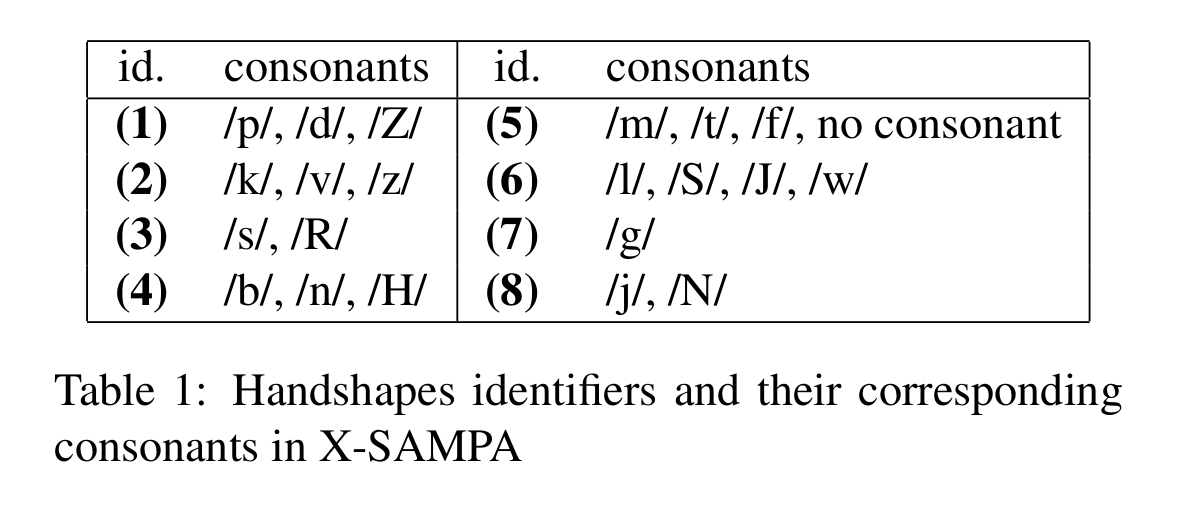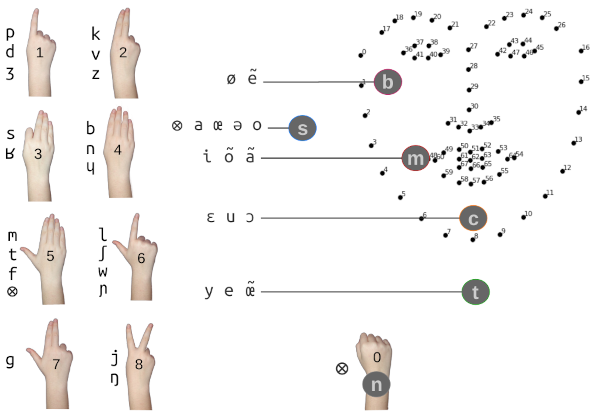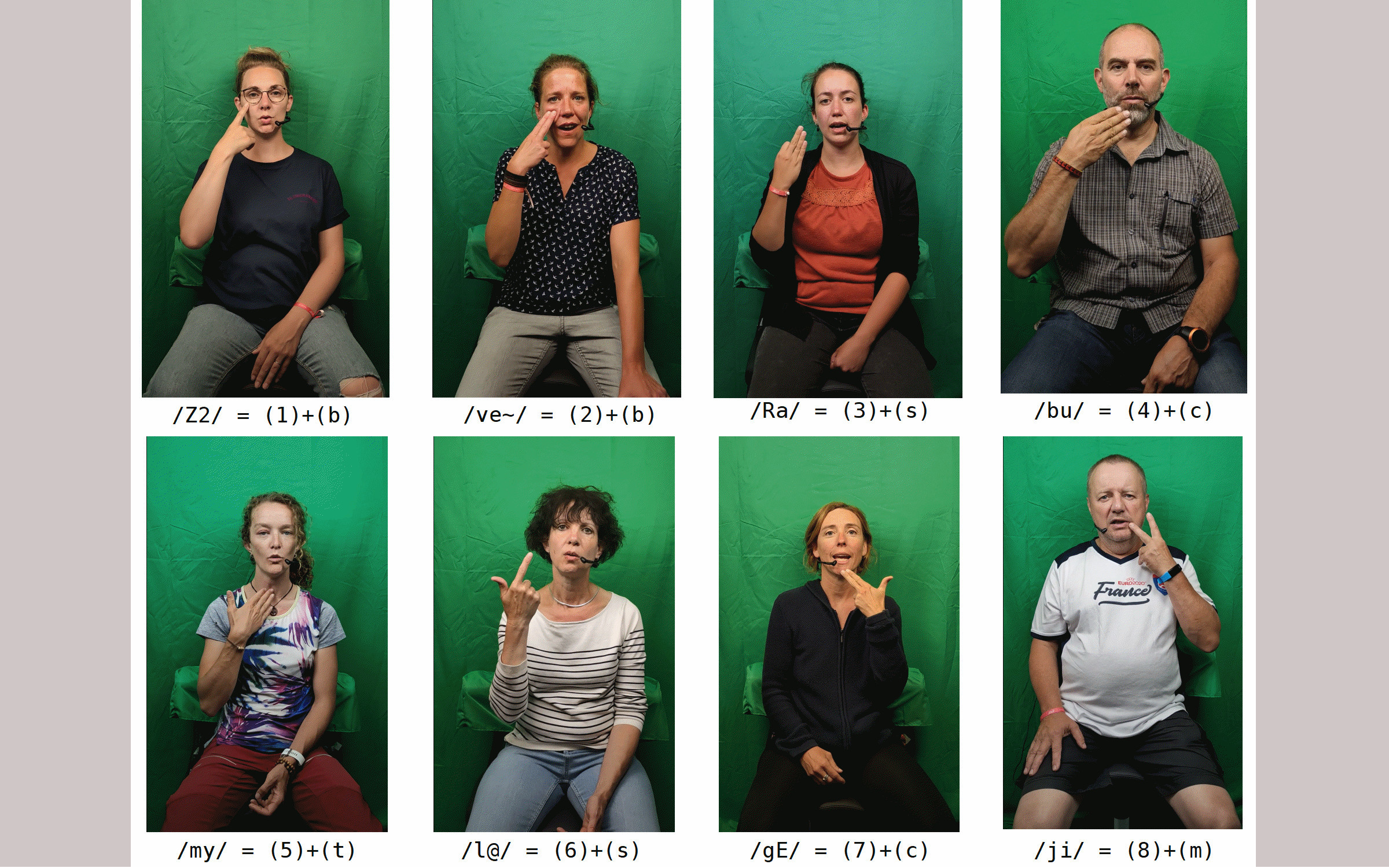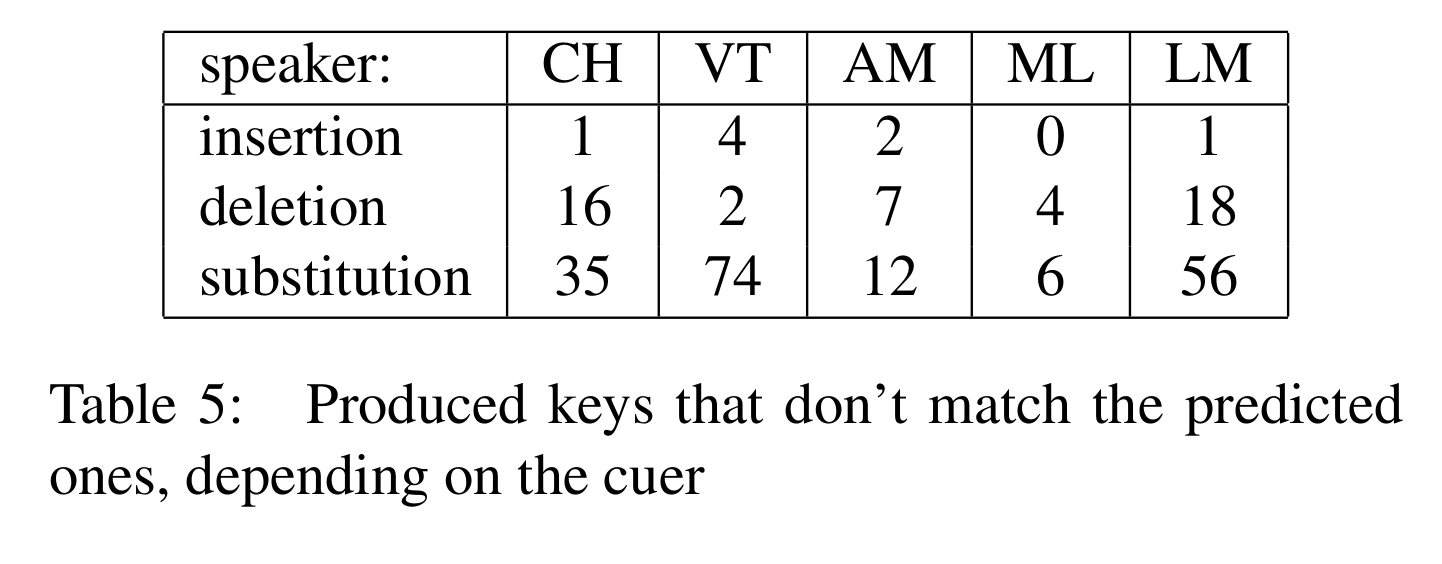

In 1966, R. Orin Cornett invented the Cued Speech
Cued Speech is a communication system developed for deaf people to complement speechreading at the phonetic level with hands
In combination with the mouth movements of speech, it makes the phonemes of spoken language look different from each other.
Used to acquire skills in reading, in lip reading and oral communication
Increasingly popular: has been adapted for more than 65 languages

Using handshapes in different placements near the face, ‘CV’ syllables are coded:
Each time a speaker pronounces a ‘CV’ or ‘-V’ syllable, a cue is produced
Other syllabic structures are produced with several cues





an HD video quality of the whole speaker;
23 different participants, some are CS certified and some are not;
10 different topics, each one read by 2 or 3 participants;
4 different sessions in each topic:
CC-BY-NC-4.0 license
Annotations are under construction. Already available: the 4 sessions of 5 topics time-aligned at the phonetic level and produced keys
No existing automatic CS prediction system
Long-term project: creating an automatic Text-to-Cued system
This study copes with time-aligned phonemes as input and produces an output with the cue names and their corresponding segmentation
We developed a grammar corresponding to these rules and implemented this grammar in software a deterministic finite automata (DFA).



The number of inserted and deleted keys is very small relatively to the number of substitutions, and almost anecdotal relatively to the corpus size.

3 errors of the speaker
5 differences due to the “liaison” phenomena. Example:
41 are ’C’ and 6 are ’CV’
two speakers are significantly un-coding the consonants: 18 deletion for LM and 16 for CH
The most frequently un-coded consonants are:
16 are ’C’ (8.7 %)
22 are ’V’ (12 %)
145 are ’CV’ (79.2 %)
Substitutions mostly (87.4 %) concern the position (the vowel) rather than the handshape (the consonant).
/@/ is 88 times (48 %) at position (b) instead of (s)
The (b) position is the one of the vowel /2/
Two cuers are significantly coding /@/ at (b) position: VT 45 times and LM 40 times
A few words are concerned: “de”, “le”, “ne” and “que”
Next work will focus on the analysis of duration and timing of the sequences of cues in the time-groups and on the temporal and spatial organization of the code in its speech co-production.